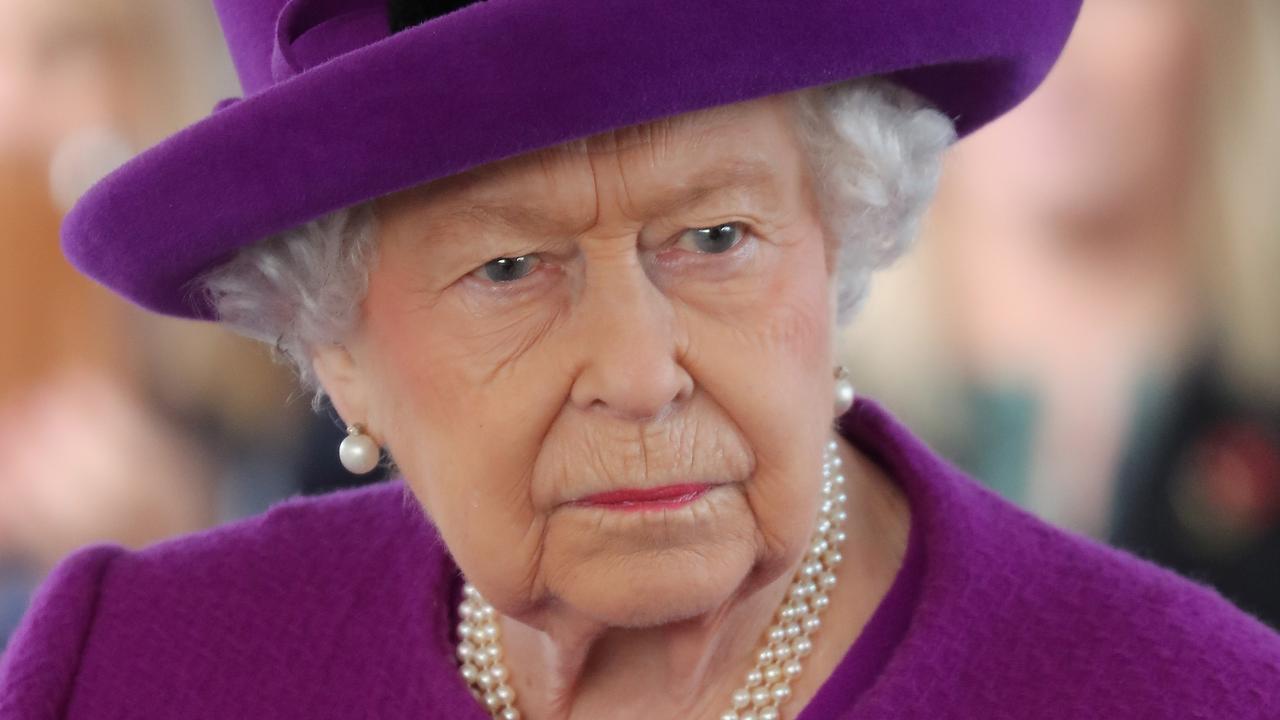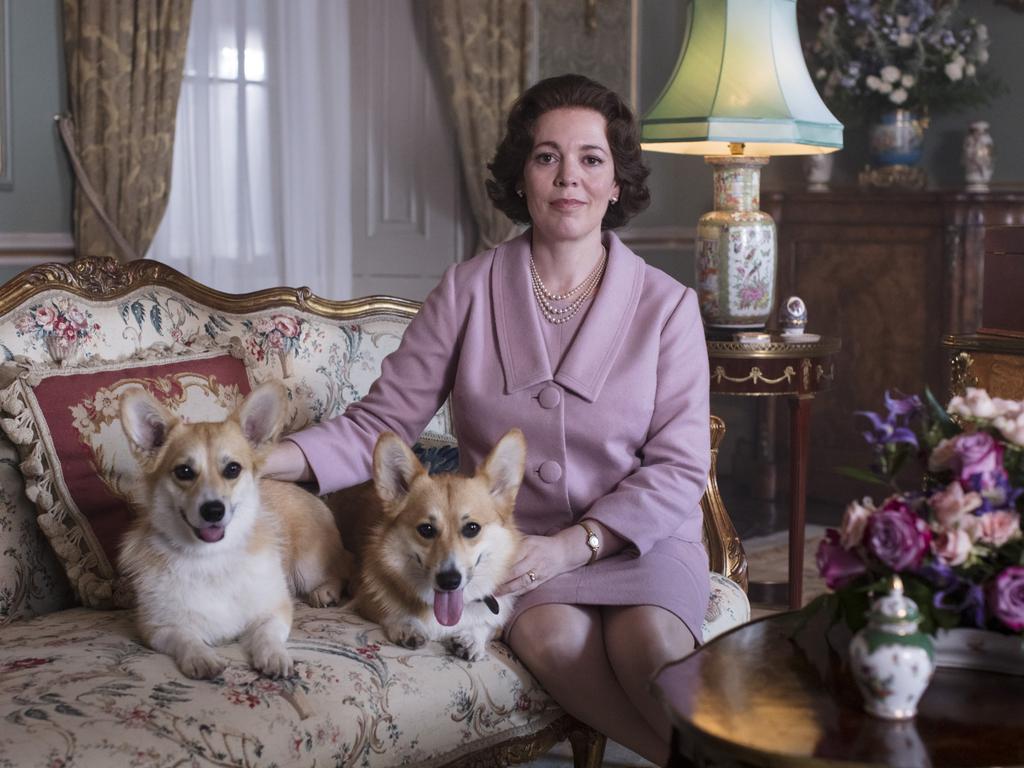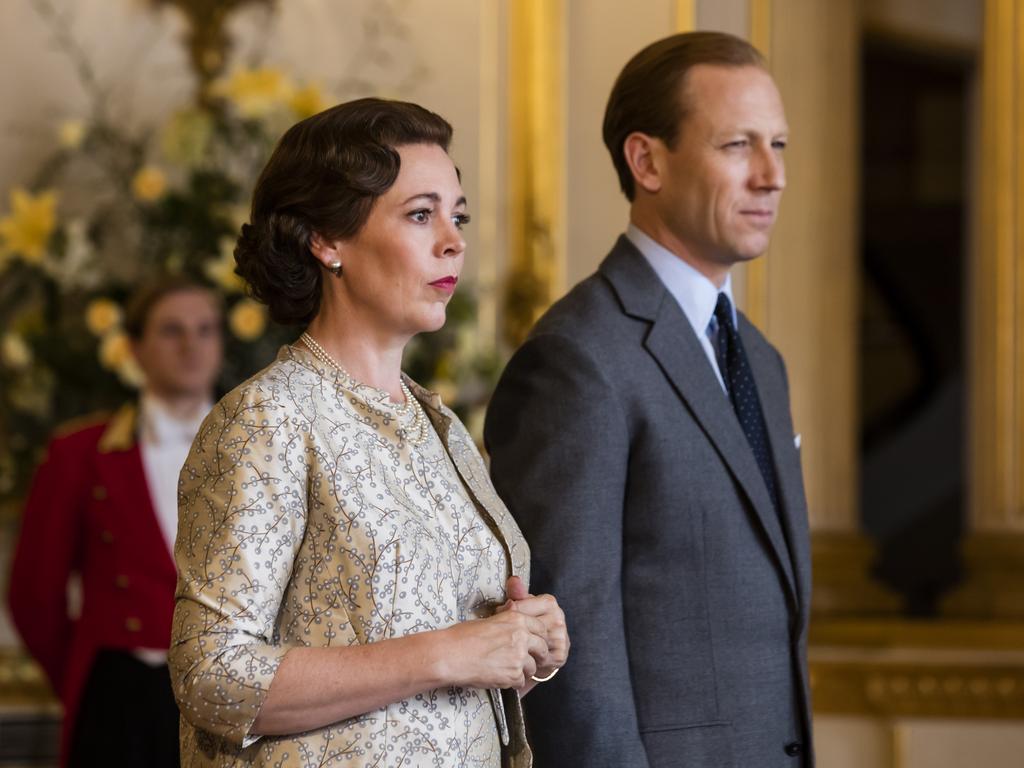The documentary the Queen doesn’t want anyone to see
For decades, a highly controversial home movie starring the royal family has languished in a royal vault, hidden away from the world for one reason. SPOILER ALERT

SPOILER ALERT: THE CROWN SEASON 3
For 75 days in 1969, TV film crews worked tirelessly to create what would be one of the most high-profile documentaries ever made. Shot in 172 locations around the world, they captured 43 hours of totally raw footage of the Queen and her family’s life behind palace gates.
The fly-on-the-wall film, which was simply titled Royal Family, was totally unprecedented and caused an international sensation.
The production and the repercussions are part of the new series of Netflix’s hit drama The Crown.
Related: Everything we know about The Crown, Season 3
Related: Surprising star at the heart of The Crown
Related: Prince Charles’ surprising first love

THE ROYAL FAMILY AS NEVER SEEN BEFORE
When it screened in 1969, three quarters of the British population tuned in to watch their monarch do such innocuous things as crack jokes, whip up a salad and make small talk with then President Richard Nixon. However, for 50 years since then, the documentary, along with about 40 hours of unused footage, have been held in the Royal Archives at Windsor, completely and utterly off limits, reportedly with the Queen having given strict instructions that it never see the light of day again.
But interest in the documentary is set to be renewed after featuring in an episode the new season of the Netflix series The Crown.
So why has this seemingly inoffensive (if not dull) doco been kept under lock and key for half a century? And why did David Attenborough think it could ‘kill the monarchy’?
Bingeing just got easier with the New Foxtel Experience. Foxtel and Netflix now all in one place. Get Foxtel

THE SWINGING 60S
Carnaby Street, miniskirts and the Rolling Stones were in. The royal family and the fusty establishment, very much out. By the end of the 1960s, as the UK and the western world underwent a seismic cultural youthquake, the popularity of the Windsors was struggling. Around this time, the renowned English journalist Malcolm Muggeridge infamously said during an American TV interview that “The English are getting bored with their monarchy”. Faced with a restless populace combined with economic uncertainty, the Windsors needed to act to modernise their image and make them seem in touch with the people.
Or as the late Lord Charteris, who was the Queen’s Private Secretary for 27 years, reportedly put it, “There was a view that the Queen needed to sell herself a bit”.

PHILIP’S RISKY PLAN
Prince Philip thought the solution lay in TV. He, along with TV producer Lord Brabourne, Lord Louis Mountbatten’s son-in-law, were adamant that allowing cameras behind palace gates would humanise the Queen and her family. There was some precedent here: In 1966, Lord Brabourne and Prince Philip had worked together on a hugely popular series called The Royal Palaces of Britain.
The goal would be to prove the Queen was not out of touch though this was a huge risk. Up until this point, the relationship between the media and royalty had been largely reverential and formal. Under Sir Richard Colville, the Queen’s press secretary from her coronation until his death in 1968 would each day call in two formally dressed court correspondents where they would be duly briefed about the day’s official events and what the Queen would be wearing. It was an assiduously arms-length arrangement.
“I think it’s quite wrong that there should be a sense of remoteness or majesty,” Prince Philip said according to royal biographer Penny Junor. “If people see, whoever it happens to be, whatever head of state, as individuals, as people, I think it makes it much easier for them to accept the system or to feel part of the system.”
The Queen was initially not sold on the idea (and the Queen Mother was completely opposed to it) however, she was finally persuaded that this ambitious small screen experiment would be a boon to the monarchy.
SAUSAGES AND SMALL TALK
The shoot for Royal Family was a huge undertaking. Crews followed the Queen on tours of Brazil and Chile and also travelled with Prince Charles to Malta and Cambridge. Meanwhile, the cameras also trailed them to Sandringham, Balmoral, Buckingham Palace, Windsor and Holyrood and joined the family on the Royal Yacht, the Royal Train and aircraft of the Queen’s Flight.
In fact, the Queen got so used to having the crews around she reportedly even wound up being an amateur expert on camera angles.
However, this was no Kardashian-esque reality show however. Every scene was pre-agreed to by an advisory committee chaired by Prince Philip.
Michael Bradsell, who edited the film, recounted the Queen watching the final edit ahead of the broadcast, saying: “We were all a little bit nervous of showing it to the Queen because we had no idea what she would make of it. She was a little critical of the film in the sense that it was too long but [Richard] Cawston, the director persuaded her that two hours was not a minute too long.”
On June 21, 1969 the final film first aired on the BBC in black and white, before a week later ITV screened it in colour. In total, about 38 million Britons tuned to see their Queen and her family like never before. In fact, it was the first time that the Queen had ever been heard publicly having a conversation rather than reading from a prepared speech.
Far from portraying the royal family as magisterial and grand, they came across as (extremely rich) but totally mundane. Infamous scenes included one where the Queen, Prince Philip, Prince Charles and Princess Anne sat around the breakfast table joking around.
In one of the very, very few clips still available, Her Majesty tells her family a very curios story: “It is extremely difficult sometimes to keep a straight face when the Home Secretary said to me ‘there is a gorilla coming in’. So I said, ‘what an extraordinary remark to make, very unkind’,” the Queen says with a smile.
“I stood in the middle of the room and pressed the bell and the doors opened and there was a gorilla.”
In another scene, she takes four-year-old Prince Edward into a shop near Balmoral to buy a sweet treat. Later, she unwraps an ice cream for him, commenting “this disgusting gooey mess is going to be in the car”.
This was the Queen like never before: Warm, maternal, funny and joyful. Gone was her reputation as a dour figurehead, instead she came across as a fairly ordinary wife and mother, albeit one with an unbeatable collection of diamond brooches.
“KILLING THE MONARCHY”
The initial reaction to the broadcast was positive, with the documentary screened a further five times in the UK along with in dozens of countries around the world.
Then, the broader implications of the TV show started to sink in. The show completely demolished their mystique, rendering them as nothing more than a fairly dull, upper crust family. By peeling back the pomp and ceremony and revealing the relative normalcy of much of their lives, they had unintentionally undermined their standing. As the famed historian Walter Bagehot wrote in the 19th century about the monarchy, “We must not let in daylight upon magic.”
At the time David Attenborough was a BBC Controller and saw the threat the film posed.
“You’re killing the monarchy, you know, with this film you’re making,” he wrote to Richard Cawston, the director.
“The whole institution depends on mystique and the tribal chief in his hut. If any member of the tribe ever sees inside the hut, then the whole system of the tribal chiefdom is damaged and the tribe eventually disintegrates.”
The journalist Sir Peregrine Worsthorne commented at the time: “Initially the public will love seeing the royal family as not essentially different from anybody else and in the short term letting in the cameras will enhance the monarchy’s popularity. But in the not-so-long run familiarity will breed, if not contempt, well, familiarity.”
At the end of 1969, the film was pulled from public view. Aside from a 90 second clip released ahead of the Queen’s Diamond Jubilee in 2012, it has never been seen again in public.
‘OPENING THE FLOODGATES’
Royal Family had another unintended consequence that the Queen and her family are still grappling with. By allowing cameras to capture their personal world they had, by default, completely renegotiated their unspoken contract with the press that their private lives were off limits.
“From that moment they became fair game for the tabloids in a way they had never been before,” historian Dr Dominic Sandbrook has said. “You might well date the emergence for much more critical press to the showing of that film.”
Ben Pimlott, the Queen’s biographer has said: “If royal ‘privacy’ was no longer sacrosanct, why should its exposure be strictly on royalty’s own terms?”
Essentially, the royal family had accidentally given license to the media to ramp up coverage and scrutiny of their life out of the public eye.
In recent years Princess Anne revealed in another documentary that she hated opening up her life to the cameras, saying: “I never liked the idea of the Royal Family film, I always thought it was a rotten idea. The attention that had been brought upon one ever since one was a child. You just didn’t want any more. The last thing you needed was greater access.”
Fifty years on from the broadcast of Royal Family it remains the holy grail for royal watchers and monarchists, an invaluable peek behind palace gates that may never come to pass again – or at least, not so long as Her Majesty reigns.



